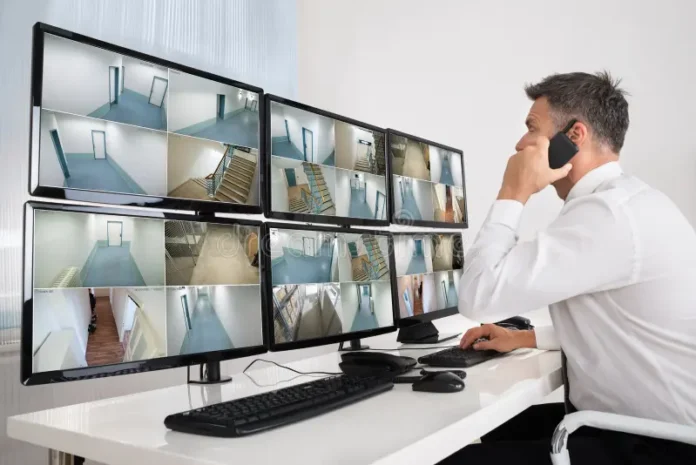CCTV monitors offer businesses and their staff peace of mind while creating a safer working environment. Furthermore, these monitors act as deterrents against criminals as they know they’re being monitored – something which may help prevent crimes being committed in the first place.
Programs can check for cameras and DVRs by sending a ping request to their web interfaces. Monitoring methods vary from manufacturer to manufacturer; therefore it’s advisable to refer to its documentation in order to find its RTSP URL.
- Detection of motion
Video motion detection (VMD) systems can enhance CCTV capabilities by detecting movement and alerting an operator of it. They work by sending pictures through a memory evaluator which analyzes them for any pixel changes; any change triggers an alarm on an operator’s monitor. Such systems reduce human fatigue caused by watching multiple monitors simultaneously as well as reduces any chance of operators missing important events by not being aware of them in time.
While CCTV surveillance systems have grown increasingly popular, they do not replace human guards or eliminate the need for human patrols and other forms of physical security measures altogether. Instead, CCTV monitoring allows a single individual to oversee multiple sites at once which helps reduce personnel costs significantly.
- Detection of tampering
CCTV monitors may be subject to deliberate tampering by those seeking to test the effectiveness of the system, including redirecting, defocusing or covering cameras with fabric, as well as spraying paint over lenses. These activities can undermine the efficacy of a security system and even render it ineffective, as people become aware that they are being monitored. According to this invention, a protective camera enclosure includes a cover portion which is manually adjustable from its initial state (exposing the camera) into an extended configuration (covering it) upon sensing tampering threats. As soon as the threat has passed, the cover portion moves or translates back into its retracted configuration and allows the camera to function without restriction or hindrance. This may help prevent cameras from being purposefully damaged thereby saving on replacement or repair costs associated with willfully damaged cameras.
- Detection of unauthorized access
The reference monitor serves as a central gatekeeper that filters and mediates access between subjects and objects, otherwise known as an authorization sequence [30]. A standard authorization architecture includes this element that intercepts all requests made by subjects before comparing them against the system’s security policy – for instance preventing unauthenticated users from writing to system password files as part of Mandatory Access Control (MAC) systems; when authorized subjects attempt to read top secret objects it can either grant or deny access depending on what decision the reference monitor makes regarding access permission.
Crime investigations typically revolve around answering five Ws of an investigation: who, where, what occurred when and why. CCTV can help provide answers for two of these Ws (Cook et al. 2016; Stelfox 2009).
British Transport Police, the specialist police force for railways in Great Britain, offers us an exclusive opportunity for research. BTP records its investigations and stores them easily accessible formats. As part of investigating an incident, its first-line supervisors complete an electronic form which asks two questions; first whether CCTV has been useful and secondly whether any reason could have prevented use.
- Detection of trespassing
CCTV systems are intended to monitor an area for unauthorized entry. These systems typically consist of a camera with lens, cabling, digital video recorder/network video recorder/monitor combo system and alarm unit depending on the system chosen; onscreen characters usually include camera number, location description and date/time information.
Detection systems identify trespassers through onscreen messages, prerecorded warnings, or activation notices sent directly to railroad personnel and local law enforcement dispatch [1]. In contrast with most surveillance systems that are designed for viewing by trained security staff only, intelligent detection systems aim to reduce rail-related trespassing incidents by tracking an area for unapproved access and activating a warning message when detected [2.].
As these types of detection systems do not require physical intrusion onto property, they could potentially be more legally defensible than surveillance devices viewed by trained personnel – such as GPS tracking devices and other novel forms of electronic surveillance – however courts relying on the law of trespass to chattels could present significant challenges to these new and emerging technologies.
- Detection of theft
Some CCTV systems use video multiplexing to reduce the number of monitors security personnel must watch by allowing multiple camera images to be seen at once on one monitor. They can even be configured so that a full picture is shown when an alarm goes off.
One important advantage of this system is its ability to detect theft by detecting when property has been removed from a vehicle and sending images back to a thief alert system.
Thief alert systems use sensor data to assess whether a vehicle has been stolen or is operating illegally without authorization, sending alert signals either directly to an alarm display or to its owner as necessary. If any such circumstances arise, alarm display or vehicle operator are immediately informed.
Another feature that may assist with theft detection is that camera images can be shown either in color or black and white depending on the camera and monitor equipment used, depending on which cameras and monitors are being used. Some X-ray scanners offer reference images alongside current scans to allow direct comparison and interpret anomalies more efficiently.
